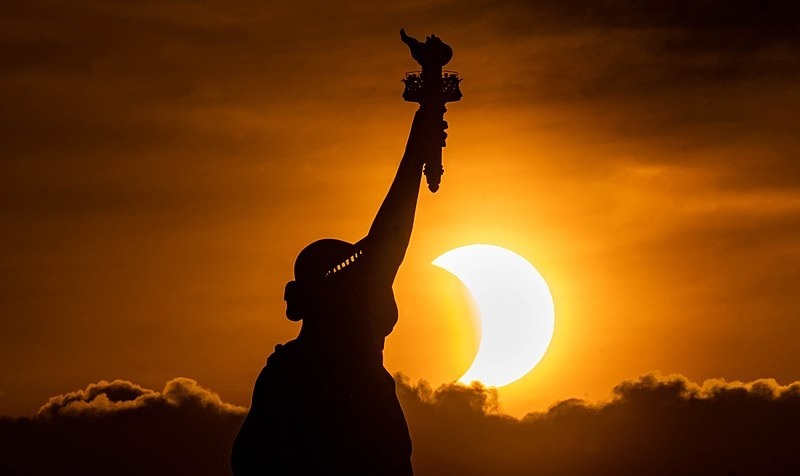Welcome to SunriseEclipse.com!


If you have witnessed a total eclipse from the path of totality, you know that a partial eclipse is pretty much a non-event. Even if the sun is 99% covered by the moon, the remaining 1% of the sun makes it look almost the same as an ordinary day. But there is an exception, and that exception is if the partial eclipse takes place at sunrise (or sunset).
Everyone has seen a sunrise, and you know that the entire disc of the sun is visible as it comes over the horizon. But if the sun rises during a partial eclipse, you can see a view similar to the one shown above. The sunrise is not a disc, but instead a crescent sun, clearly visible.
The photo above was taken during the June 10, 2021 eclipse. The eclipse was partial in the northeastern United States, and took place at sunrise. The result was this spectacular view of the crescent sun rising over the Statue of Liberty. The next sunrise eclipse will take place on March 29, 2025. It will be visible in northeastern North America and western Europe.
You can read more about this amazing phenomenon at National Geographic or Sky and Telescope . As Sky and Telescope warns, solar eclipse glasses are required even for a sunrise eclipse. The magazine notes that a momentary glance might be OK, but you should never stare at the Sun for even a second, since the infrared light can permanently damage your eyes. If you still have your glasses from the April 8 eclipse, you can use those. If you need a new pair, you can order them from MyEclipseGlasses.com for only $3.99, which includes free shipping by First Class Mail anywhere in the world.
The next sunrise eclipse will be visible in the northeastern United States and Canada on March 29, 2025.
Photo credit: Wikimedia Commons photo by Anthony Quintano from Mount Laurel, United States - Statue of Liberty Annular Solar Eclipse, CC BY 2.0.